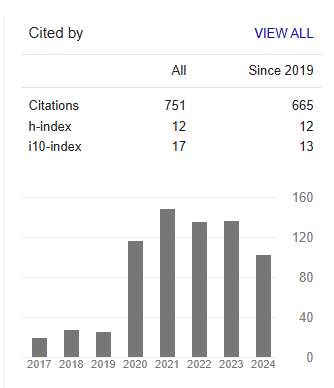Relationship of Climate, Environmental Health Intervention with the Incident Rate (IR) of Dengue Hemorrhagic Fever Case in North Jakarta, 2017-2019
Abstract
Sukarmi, Hariadi Wibisono, Cicilia Windiyaningsih
The issue of climate change has been hotly discussed considering its serious impact on various aspects of life, especially health. The negative potential or risk of climate change to health has been seen as a global challenge that can threaten human livelihoods. This climate change has resulted in changing disease patterns in society due to a changing climate and environment. The increase in temperature has the potential to be associated with a significant increase in cases of Dengue Hemorrhagic Fever (DHF). This research was a descriptive with an ecological time series design to describe the frequency and distribution of health problems or the correlation between disease and the factors that influence it. The purpose of this study was to determine the relationship between climate, environmental health interventions and the incidence of dengue fever. The results of climate conditions in North Jakarta in 2017 to 2019 average normal air temperature 28.480C, high humidity 74.94%, medium rainfall 136.37 mm, wind speed classified as low 1.30 knots, active waste bank environment 162.66, DHF incident rate 47.86 below national standards 49/100,000 inhabitants. The results of the bivariate factors associated with IR DHF were humidity p 0.006, larva free rate 0.003, waste bank 0.009, rainfall 0.190, and wind speed 0.474. The final model factors related to IR DHF were humidity p value 0.000, R0.741, R Square 0.550; Rainfall p value 0.005, R 0.407, R Square 0.165, Larvae Free Rate R 0.296, R Square 0.088. The conclusion of these three factors contributed to the incidence of DHF R 0.952 meaning that the relationship was very strong, R Square 0.906 (90.6%) contributed to the IR DHF in North Jakarta. Suggestions in the environment that the humidity was not high around 45%- 60%, larvae free rate < 95%. Precipitation >100 mm DHF have alert.



